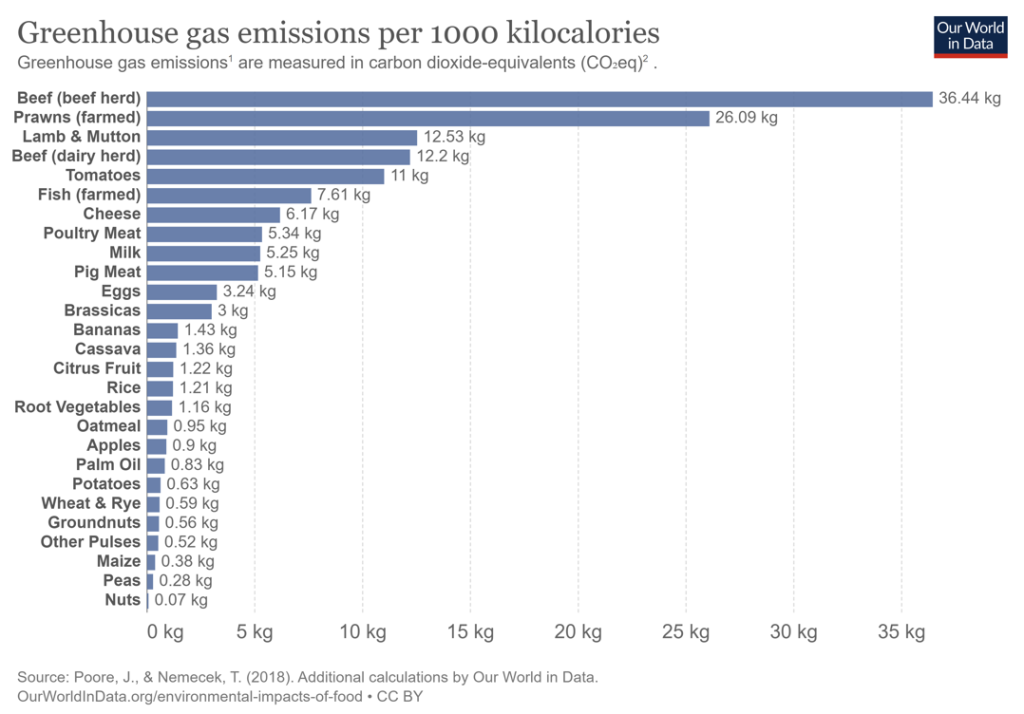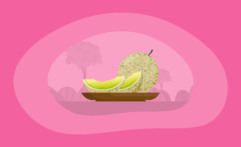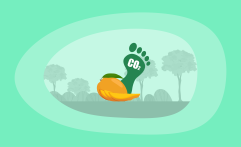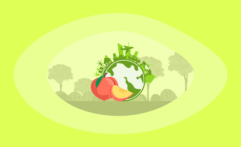What Is the Carbon Footprint of Strawberries? A Life-Cycle Analysis
Impactful Ninja is reader-supported. When you buy through links on our site, we may earn an affiliate commission.
Learn more
Learn more
.
Hey fellow impactful ninja ? You may have noticed that Impactful Ninja is all about providing helpful information to make a positive impact on the world and society. And that we love to link back to where we found all the information for each of our posts. Most of these links are informational-based for you to check out their primary sources with one click. But some of these links are so-called "affiliate links" to products that we recommend. First and foremost, because we believe that they add value to you. For example, when we wrote a post about the environmental impact of long showers, we came across an EPA recommendation to use WaterSense showerheads. So we linked to where you can find them. Or, for many of our posts, we also link to our favorite books on that topic so that you can get a much more holistic overview than one single blog post could provide. And when there is an affiliate program for these products, we sign up for it. For example, as Amazon Associates, we earn from qualifying purchases. First, and most importantly, we still only recommend products that we believe add value for you. When you buy something through one of our affiliate links, we may earn a small commission - but at no additional costs to you. And when you buy something through a link that is not an affiliate link, we won’t receive any commission but we’ll still be happy to have helped you. When we find products that we believe add value to you and the seller has an affiliate program, we sign up for it. When you buy something through one of our affiliate links, we may earn a small commission (at no extra costs to you). And at this point in time, all money is reinvested in sharing the most helpful content with you. This includes all operating costs for running this site and the content creation itself. You may have noticed by the way Impactful Ninja is operated that money is not the driving factor behind it. It is a passion project of mine and I love to share helpful information with you to make a positive impact on the world and society. However, it's a project in that I invest a lot of time and also quite some money. Eventually, my dream is to one day turn this passion project into my full-time job and provide even more helpful information. But that's still a long time to go. Stay impactful,Affiliate Disclosure
Why do we add these product links?
What do these affiliate links mean for you?
What do these affiliate links mean for us?
What does this mean for me personally?
![]()
The average American consumes around 8 lbs of strawberries every year. Strawberries are a deliciously sweet fruit that contains more vitamin C than oranges. However, strawberries also take a toll on the climate, with many aspects of their production creating significant carbon emissions. So, we had to ask: What is the carbon footprint of strawberries?
Strawberries have a fairly high carbon footprint of 0.39kg (0.88lb) of CO2e per pound of strawberries. This is mainly due to their irrigation requirements, high pesticide use, plastic packaging, and refrigeration during transportation from Mexico.
In this article, we will look at the full life-cycle of strawberries, investigating how each stage contributes to their carbon footprint. We will go through all of the main stages of strawberries’ production—starting with growth and then going through harvesting, processing, transportation, and ending at waste disposal—and will evaluate how each stage contributes to strawberries’ carbon footprint. So, let’s get into the carbon footprint of strawberries!
Here’s How We Assessed the Carbon Footprint of Strawberries
The carbon footprint is one of the ways we measure the effects of our human-induced global climate change. It primarily focuses on the greenhouse gas (GHG) emissions associated with consumption, but also includes other emissions such as methane (CH4), nitrous oxide, and chlorofluorocarbons, and is generally expressed in carbon dioxide equivalents (CO2e).
“Carbon footprint: the amount of greenhouse gases and specifically carbon dioxide emitted by something (such as a person’s activities or a product’s manufacture and transport) during a given period”
Merriam Webster
Basically, it is the amount of carbon emitted by you as an individual or an organization providing you with goods and services – including strawberries:
- This includes GHG emissions from producing the products that we use and foods that we eat (e.g., power plants, factories or farms, and landfills)
- GHG emissions from fuel that we burn directly or indirectly (e.g., logistics and transportation, cooling or heating facilities),
- as well as the GHG emissions attributed to how we consume these products and foods.
To understand the carbon footprint of strawberries, we must assess their life-cycle and each stage’s sustainability. This life-cycle assessment (LCA) is a method to evaluate the environmental impacts of products and materials.
Here’s the Overall Carbon Footprint of Strawberries
The overall carbon footprint of strawberries is fairly high at 0.39kg (0.88lb) of CO2e per pound of strawberries. The main factors that contribute to this are their growth methods, with high irrigation and pesticide use, the need for refrigerated trucks during transport, and their use of plastic packaging.
The carbon footprint of strawberries is high when compared with other fruits. However, there are a few factors that impact this, including the amount and type of pesticides used, distance of transportation, and the amount of packaging used.
| The carbon footprint of strawberries | 0.39kg (0.88lb) of CO2e per pound of strawberries |
So, let’s have a look at each stage of the LCA of strawberries!
| The life-cycle stages of strawberries | Each stage’s carbon footprint |
| Growing of strawberries | The carbon footprint of growing strawberries is high. The main factors that contribute to this are their lower yield density, irrigation requirements, and high pesticide use. |
| Harvesting, processing, and packaging of strawberries | The carbon footprint of harvesting, processing, and packaging strawberries is moderate to low. The main factor that raises their footprint during this stage is the use of plastic packaging. |
| Transporting of strawberries | The carbon footprint of transporting strawberries is fairly high. This is mainly because they are imported from Mexico and need to be transported in refrigerated trucks. |
| End-of-life of strawberries | The carbon footprint of the end-of-life of strawberries is somewhat high. This is mainly because of low composting rates and plastic recycling rates, meaning that most waste ends up in landfill. |
The main stages that contribute the most to strawberries’ carbon footprint are growth and transportation, because of irrigation, pesticide use, and refrigeration during transportation. However, there are still aspects of harvesting and end-of-life that raise strawberries’ carbon footprint, namely the use of plastic packaging.
What Is the Carbon Footprint of Growing Strawberries
The carbon footprint of growing strawberries is high. The main factors that contribute to this are their lower yield density, irrigation requirements, and high pesticide use.
The process of growing strawberries generally has a high carbon footprint, depending on the methods used. Factors like the amount of irrigation, deforestation, and pesticide use can all contribute to the overall impact of the growth stage.
Which factors impact the carbon footprint of growing strawberries?
- How do strawberries grow: Strawberries are grown on small plants in patches. They are not trees, which have natural carbon sequestering properties, but strawberry plants can still sequester carbon. This means that this stage has a very low carbon footprint.
- What is the growth duration of strawberries: The longer the growth frame, the higher the carbon footprint because more resources are required to sustain the plants. Strawberry plants are very small, which means that they will start producing fruit the same year they are planted, unlike larger trees. Strawberry flowers produce fruit within about two months. This is incredibly fast compared to other fruits. Thus, this stage has an incredibly low carbon footprint.
- What is the land usage of strawberries: When fruits use less land, they require less deforestation and resources to sustain them. Strawberries typically yield around 15–25 tons of fruit per hectare. This is a reasonably efficient use of land—more than cherries, but less than pears. So, this stage has a moderate carbon footprint.
- What is the water usage of strawberries: Most strawberries sold in the US come from Mexico. Strawberries need around 1–1.5 inches of water per week, and up to an inch a day during fruiting season. However, Mexico only gets around 28 inches of rain per year. So, strawberries typically need significant irrigation, which contributes to their carbon footprint.
- What is the pesticide and fertilizer usage of strawberries: Strawberries have very high pesticide rates. According to a 2020 study, 90% of strawberries contain pesticides, more than any other fruit. Pesticides create a significant amount of emissions, so this stage does contribute to the overall carbon footprint.
The growing of strawberries has a fairly high carbon footprint overall. Their growth method and duration have very low emissions rates. However, their less efficient land usage, considerable irrigation requirements, and incredibly high pesticide use raise their carbon footprint significantly.
In short, growing strawberries has a high carbon footprint. They mature very quickly, but they don’t yield as much per hectare as other fruits. They also require high amounts of irrigation and use copious pesticides, thus raising their carbon footprint.
What Is the Carbon Footprint of Harvesting, Processing, and Packaging Strawberries
The carbon footprint of harvesting, processing, and packaging strawberries is moderate to low. The main factor that raises their footprint during this stage is the use of plastic packaging.
The next major stage in the life-cycle of strawberries’ carbon emissions is harvesting, processing, and packaging. This involves picking the fruit, checking it for damage, sorting it, and getting it ready for distribution. This stage can contribute greatly to the carbon footprint of the fruit depending on the processes used.
Which factors impact the carbon footprint of harvesting, processing, and packaging strawberries?
- How are strawberries harvested: Strawberries are typically harvested by hand. This process doesn’t require direct energy and therefore has a very low carbon footprint.
- How are strawberries processed: Unlike most fruits, strawberries are often packed directly on the field. This practice reduces a lot of the mechanization and time required, which means that processing strawberries has a low carbon footprint.
- How are strawberries packaged: Almost all strawberries are packaged in plastic clamshells. Plastic produces a significant amount of carbon in its production. This means that strawberry packaging contributes significantly to their overall carbon footprint.
The harvesting, processing, and packaging stage of strawberries has a moderate to low carbon footprint. The practices of hand harvesting and processing are low-carbon, but the use of plastic packaging means that this stage has a slightly higher carbon footprint.
In short, the processing of strawberries has low emissions. Performing most tasks by hand helps to keep emissions down, but the use of plastic packaging raises their overall emissions.
What Is the Carbon Footprint of Transporting Strawberries
The carbon footprint of transporting strawberries is fairly high. This is mainly because they are imported from Mexico and need to be transported in refrigerated trucks.
Strawberries’ journeys have just started when they are packaged. They then have to travel the distance between the farm and the grocery store. The distance, as well as the method through which they have to travel, are the two most important factors in determining the carbon footprint of their transportation.
Which factors impact the carbon footprint of transporting strawberries?
- Where are strawberries grown: Most US-consumed strawberries are grown in Mexico. Thus, they don’t have to be flown in, like fruit from other continents, but they still have a further distance to travel than domestic fruit. However, if you live in southern states like Texas, the distance will be lower. This means that strawberries’ transportation distance footprint is moderate, depending on where you live.
- How are strawberries transported: Strawberries need to be transported in refrigerated trucks to maintain freshness. Unfortunately, refrigerated trucks use considerably more fuel than unrefrigerated trucks, meaning that this stage does contribute significantly to strawberries’ carbon footprint.
Strawberries have a fairly high transportation footprint. The fact that strawberries are imported and need to be transported in refrigerated trucks raises their carbon footprint.
In short, transporting strawberries has a somewhat high carbon footprint. This is mainly because of the distance covered from Mexico and the higher fuel accrued from refrigerated trucks.
What Is the Carbon Footprint of the End-of-Life of Strawberries
The carbon footprint of disposing of the end-of-life of strawberries is somewhat high. This is mainly because of low composting rates and plastic recycling rates, meaning that most waste ends up in landfill.
Strawberries’ carbon footprint journey isn’t done after you consume them. In fact, one of the most important factors that will determine the overall carbon footprint of strawberries is how its waste is disposed of. Here, we will look at how this stage in the process affects strawberries’ carbon footprint.
Which factors impact the carbon footprint of the end-of-life of strawberries?
- How are strawberries disposed of: Strawberries have stems that people typically don’t eat but they can theoretically be composted. However, in practice, 96% of food waste ends up in landfills. Furthermore, food waste is particularly harmful to the environment as it releases a greenhouse gas called methane when it is put in landfills. This means that organic waste contributes significantly to strawberries’ overall carbon footprint.
- How is the packaging of strawberries disposed of: Strawberries are mainly packaged in plastic. Plastic can be recycled, but their actual recycling rates are very low at 9%. Thus, packaging does contribute significantly to strawberries’ carbon footprint.
The process of disposing of strawberries doesn’t need to have a high carbon footprint. However, the actual rates of composting and recycling of strawberry waste are very low, meaning that most strawberry waste ends up in landfills.
In short, the end-of-life carbon impact of strawberries is fairly high. The lack of consistent composting and plastic recycling amounts to strawberries filling landfills.
How Does the Carbon Footprint of Strawberries Compare to Other Types of Food
Strawberries rank highly when compared to other foods and fruits, in terms of carbon footprint. When kilocalories are taken into account, their lower calorie/pound ratio means that their carbon footprint is significantly higher.
Strawberries have a fairly high carbon footprint in relation to other foods. When assessing the carbon footprint of a particular food, it is always important to place it in the context of other foods. This can help you to see the relative impact they have and assist you in making decisions between different foods based on their carbon footprint. In this next part of the article, we will show you how strawberries compare to other foods in terms of carbon footprint.
How Does the Carbon Footprint of Strawberries Compare to Other Types of Fruits
Strawberries have a high carbon footprint when compared to other fruits. Fruits in general, tend to have lower carbon footprints than many other foods, like dairy products. However, there is still a lot of variation between them. Different transportation distances, the density of orchards, variations in growing methods, and pesticide use can all add up to contribute to their carbon footprints. Here, we will look at how strawberries compare specifically to other fruits in terms of carbon footprint.
| Fruits | Carbon Footprint per lbs | Calories per lbs | Carbon Footprint per Calories |
| Avocados | 0.85 kg (1.9 lb) of CO2e per pound of avocados | 725 calories per pound | 1.17kg (2.57lb) of CO2e per 1,000 calories of avocados |
| Grapes | 0.64 kg (1.42 lbs) of CO2e per pound of grapes | 300 calories per pound | 2.13kg (4.7lb) of CO2e per 1,000 calories of grapes |
| Cantaloupes | 0.58kg (1.3lb) of CO2e per pound of cantaloupe | 154 calories per pound | 3.77kg (8.31lb) of CO2e per 1,000 calories of cantaloupes |
| Kiwis | 0.56kg (1.24lb) of CO2e per pound of kiwis | 277 calories per pound | 2.02kg (4.45lb) of CO2e per 1,000 calories of kiwis |
| Blueberries | 0.45kg (1lb) of CO2e per pound of blueberries | 256 calories per pound | 1.75kg (3.86lb) of CO2e per 1,000 calories of blueberries |
| Plums | 0.4 kg (0.88 lb) CO2e per pound of plums | 209 calories per pound | 1.91kg (4.21lb) of CO2e per 1,000 calories of plums |
| Strawberries | 0.39kg (0.88lb) of CO2e per pound of strawberries | 145 calories per pound | 2.69kg (5.93lb) of CO2e per 1,000 calories of strawberries |
| Pomegranates | 0.39kg (0.87lb) of CO2e per pound of pomegranates | 375 calories per pound | 1.04kg (2.29lb) of CO2e per pound of pomegranates |
| Figs | 0.3kg (0.68lb) of CO2e per pound of figs | 333 calories per pound | 0.9kg (1.98lb) of CO2e per 1,000 calories of figs |
| Papayas | 0.3kg (0.67lb) of CO2e per pound of papayas | 195 calories per pound | 1.54kg (3.4lb) of CO2e per 1,000 calories of papayas |
| Oranges | 0.3kg (0.66 lb) CO2e per pound of oranges | 213 calories per pound | 1.41kg (3.11lb) of CO2e per 1,000 calories of oranges |
| Dates | 0.27kg (0.6lb) of CO2e per pound of dates | 1,300 calories per pound | 0.21kg (0.46lb) of CO2e per 1,000 calories of dates |
| Apples | 0.24 kg (0.53 lb) of CO2e per pound of apples | 236 calories per pound | 1.02kg (2.25lb) of CO2e per 1,000 calories of apples |
| Pears | 0.23kg (0.52 lb) of CO2e per pound of pears | 259 calories per pound | 0.89kg (1.96lb) of CO2e per 1,000 calories of pears |
| Bananas | 0.21 kg (0.48 lb) of CO2e per pound of banana | 404 calories per pound | 0.52kg (1.15lb) of CO2e per 1,000 calories of bananas |
| Mangoes | 0.21 kg (0.46 lb) CO2e per pound of mangoes | 272 calories per pound | 0.77lb (1.7lb) of CO2e per 1,000 calories of mangoes |
| Cherries | 0.19kg (0.41 lb) of CO2e per pound of cherries | 227 calories per pound | 0.84kg (1.85lb) of CO2e per 1,000 calories of cherries |
| Limes | 0.18kg (0.39lb) of CO2e per pound of limes | 136 calories per pound | 1.32kg (2.91lb) of CO2e per 1,000 calories of limes |
| Peaches | 0.17kg (0.38lb) CO2e per pound of peaches | 176 calories per pound | 0.97kg (2.14lb) of CO2e per 1,000 calories of peaches |
| Apricots | 0.16kg (0.36lb) of CO2e per pound of apricots | 218 calories per pound | 0.73kg (1.61lb) of CO2e per 1,000 calories of apricots |
| Raspberries | 0.15kg (0.33lb) of CO2e per pound of raspberries | 240 calories per pound | 0.63kg (1.39lb) of CO2e per 1,000 calories of raspberries |
| Pineapples | 0.09 kg (0.20 lb) of CO2e per pound of pineapple | 227 calories per pound | 0.4kg (0.88lb) of CO2e per 1,000 calories of pineapples |
| Lemons | 0.09kg (0.19lb) CO2e per pound of lemons | 132 calories per pound | 0.68kg (1.5lb) of CO2e per 1,000 calories of lemons |
| Grapefruit | 0.08kg (0.18lb) of CO2e per pound of grapefruit | 191 calories per pound | 0.42kg (0.93lb) of CO2e per 1,000 calories of grapefruits |
| Blackberries | 0.07kg (0.15lb) of CO2e per pound of blackberries | 195 calories per pound | 0.36kg (0.79lb) of CO2e per 1,000 calories of blackberries |
| Clementines | 0.06 kg (0.13 lb) CO2e per pound of clementines | 213 calories per pound | 0.28kg (0.62kg) of CO2e per 1,000 calories of clementines |
| Watermelons | 0.05kg (0.11 lb) of CO2e per pound of watermelon | 136 calories per pound | 0.37kg (0.82lb) of CO2e per 1,000 calories of watermelons |
In relation to other fruits, strawberries rank fairly high. Though they have less than half the emissions of avocados, they still sit around double the average for the whole chart. They have around four times the emissions of pineapples and lemons, and eight times the emissions of clementines and watermelons. Clearly, strawberries are not the most carbon-conscious among fruits.
How Does the Carbon Footprint of Strawberries Compare to Other Types of Food in General
Branching outside the world of fruit, strawberries also have a place among food in general. In terms of their carbon footprint in relation to kilocalories, they have a moderate to high carbon footprint compared to other foods.
When it comes to greenhouse gas emissions (GHG), foods are often compared in terms of emissions per 1,000 kilocalories (as opposed to their weight in lbs or kg).

Strawberries, along with grapes and other berries, rank moderately on the scale of foods in general.
- We can see that, when kilocalories are taken into account, they are one of the highest fruits on the list.
- This is because berries have a lower calorie per pound ratio, at around 260 whereas bananas have 400.
- This means that their kilocalorie carbon footprint will be higher because fewer calories are produced with those emissions.
How Can You Reduce and Offset Your Personal Carbon Footprint
There are many things you can do to cut down on how your strawberry consumption impacts the planet. By carefully considering your consumption habits to reduce carbon emissions and offsetting your carbon through carbon-extraction schemes, you can consume strawberries without having a large negative impact on the earth.
Some of the carbon risks of strawberries highlighted in this article may sound a bit alarming, especially since their carbon footprint is fairly high. However, the good news is that there are a lot of things you can do to lower your carbon emissions while still eating strawberries. Purchasing organic or locally grown strawberries and disposing of the waste efficiently can help with this. Furthermore, you can consider emission offsets, which work to extract carbon from the atmosphere. Here, we will walk you through how to accomplish both of these things.
How Can You Reduce Your Carbon Footprint When Shopping for Strawberries
Before you start worrying about your offsets, you might be wondering how you can stop producing carbon in the first place through your strawberry consumption. One of the best ways to do this is to look at the parts of the strawberry process that have the highest carbon footprint and start there. In this section, we give you a short list of ways you can reduce your strawberry carbon footprint, so you can continue consuming strawberries without the high carbon price tag.
- Buy local strawberries: One of the major contributors to strawberries’ carbon footprint is their transportation from Mexico. While most strawberries consumed in the US are grown in Mexico, there are still a lot of domestic strawberry farms, especially in California. If you make a point of buying American-grown strawberries, you will be greatly reducing your carbon footprint.
- Buy organic strawberries: Another major contributor to strawberries’ carbon footprint is their excessive pesticide use. Organic farms don’t use chemicals like pesticides and so their food has a lower carbon footprint in that respect. Buying organic strawberries can help reduce your pesticide-related carbon footprint.
- Avoid plastic packaging: This one can be hard because the vast majority of strawberries come in plastic clam shells. However, if you can find a strawberry farm that uses cardboard packaging (which is far easier to recycle) or no packaging at all, then you can greatly reduce your carbon footprint.
- Dispose of waste responsibly: Low composting and recycling rates might be discouraging, but the good news is that you have control over where your strawberry waste ends up. Try to compost any organic waste that you can. If your city doesn’t have a composting system, you can try creating your own! Likewise, make sure to recycle any plastic. Taking these measures will mean that far less of your strawberry waste will end up in landfills and thus your emissions will be reduced.
Following some of these methods can really help you to cut down on your strawberry carbon emissions. None of these will bring your emissions down to zero, since there are always hidden carbon costs that may be outside of your control. But reduction is always better than nothing! However, if you do want to get your strawberry emissions down to absolute zero, then you can look into carbon offsets.
How Can You Offset Your Personal Carbon Footprint
Carbon offsets are reductions in carbon emissions that are used to compensate for carbon emissions occurring elsewhere – for example for the carbon emissions that are associated with strawberries. They are measured in tons of CO2 equivalents and are bought and sold through international brokers, online retailers, and trading platforms on what is known as the global carbon offset market.
“Carbon Offset: a way for a company or person to reduce the level of carbon dioxide for which they are responsible by paying money to a company that works to reduce the total amount produced in the world, for example by planting trees”
Oxford Dictionary
In terms of strawberries – and indeed all food types – there will always be a carbon footprint, because of the resources it takes to get your food from farms to the place where you’ll eventually eat them. And while there are ways to reduce your carbon footprint when shopping for strawberries, carbon offsets would be a way to reduce your CO2e emissions all the way down to net zero (or even to become climate positive).
However, when you purchase carbon offsets, it’s important that they actually make a difference in offsetting (aka reducing) total carbon emissions. To achieve that, the following are key criteria:
- Carbon offset projects have to be effective (different projects have different effectiveness rates)
- Carbon offset projects have to be additional
- Carbon offset projects have to be permanent
- The claims from carbon offset projects have to be verifiable
To find the best carbon offsets for you personally, check out our full guide on the best carbon offsets for individuals, where you’ll also learn more about how these carbon offset projects work, what their respective offsetting costs are, and what your best way would be to offset your own carbon emissions.
Final Thoughts
Strawberries are incredibly popular, but what most people don’t know is that they have a higher carbon footprint than most foods. Purchasing local and organic strawberries and reducing landfill waste are the best ways of lowering your carbon footprint. However, there are still factors like irrigation and packaging that might be outside of your control. Making the effort to reduce your emissions will help you to consume strawberries more responsibly!
Stay impactful,

Sources
- Edible Arrangements: 10 Facts About Strawberries
- Britannica: Carbon footprint
- Science Direct: Life-cycle assessment (LCA)
- MIT SMR: Strategic Sustainability Uses of Life-Cycle Analysis
- Sai Platform: Carbon and Water Footprint of Oranges and Strawberries
- Yara: Strawberry Production Systems
- USDA: Trees are Climate Change Storage Heroes
- Co2 Science: Agriculture
- RHS: Strawberries
- Impactful Ninja: What is the Carbon Footprint of Mangoes
- Statistica: Strawberry Yield Scotland
- Impactful Ninja: What is the Carbon Footprint of Cherries
- Agrifarming: Pear Fruit Farming
- EDIS: An Overview of the US and Mexico Strawberry Industries
- Pennington: How to Grow Strawberries
- CA Garden: Growing Berries in Your Backyard
- Climate Knowledge Portal: Mexico
- Wicked Leeks: Strawberries Top ‘Dirty Dozen’ Pesticide List
- Pesticides.org: Pesticides and the Climate Crisis
- The Produce Nerd: Strawberry Harvest
- City to Sea: How Does Plastic Contribute to Climate Breakdown
- Fresh Knowledge: Transport Practices for Strawberries
- Glacier Vehicles: How Much Fuel Does a Refrigerated Truck Consume?
- EPA: Reducing the Impact of Wasted Food
- BC: Food and Organic Waste
- Also Known As: 12 Interesting Facts About Packaging Waste
- Impactful Ninja: What is the Carbon Footprint of Avocados
- Helabel: Kiwis
- Impactful Ninja: What is the Carbon Footprint of Plums
- Impactful Ninja: What is the Carbon Footprint of Oranges
- Impactful Ninja: What is the Carbon Footprint of Apples
- LivelCA: Pears
- Impactful Ninja: What is the Carbon Footprint of Peaches
- Impactful Ninja; What is the Carbon Footprint of Bananas
- Impactful Ninja; What is the Carbon Footprint of Pineapples
- Impactful Ninja: What is the Carbon Footprint of Lemons
- Impactful Ninja; What is the Carbon Footprint of Clementines
- Impactful Ninja: What is the Carbon Footprint of Watermelons
- Our World in Data: Greenhouse Gas Emissions per 1000 kilocalories
- California Strawberries: Who is Growing Your Strawberry Fruit?
- Earth Easy: How to Make Compost
- Impactful Ninja: 12 Best Carbon Offsets for Individuals




